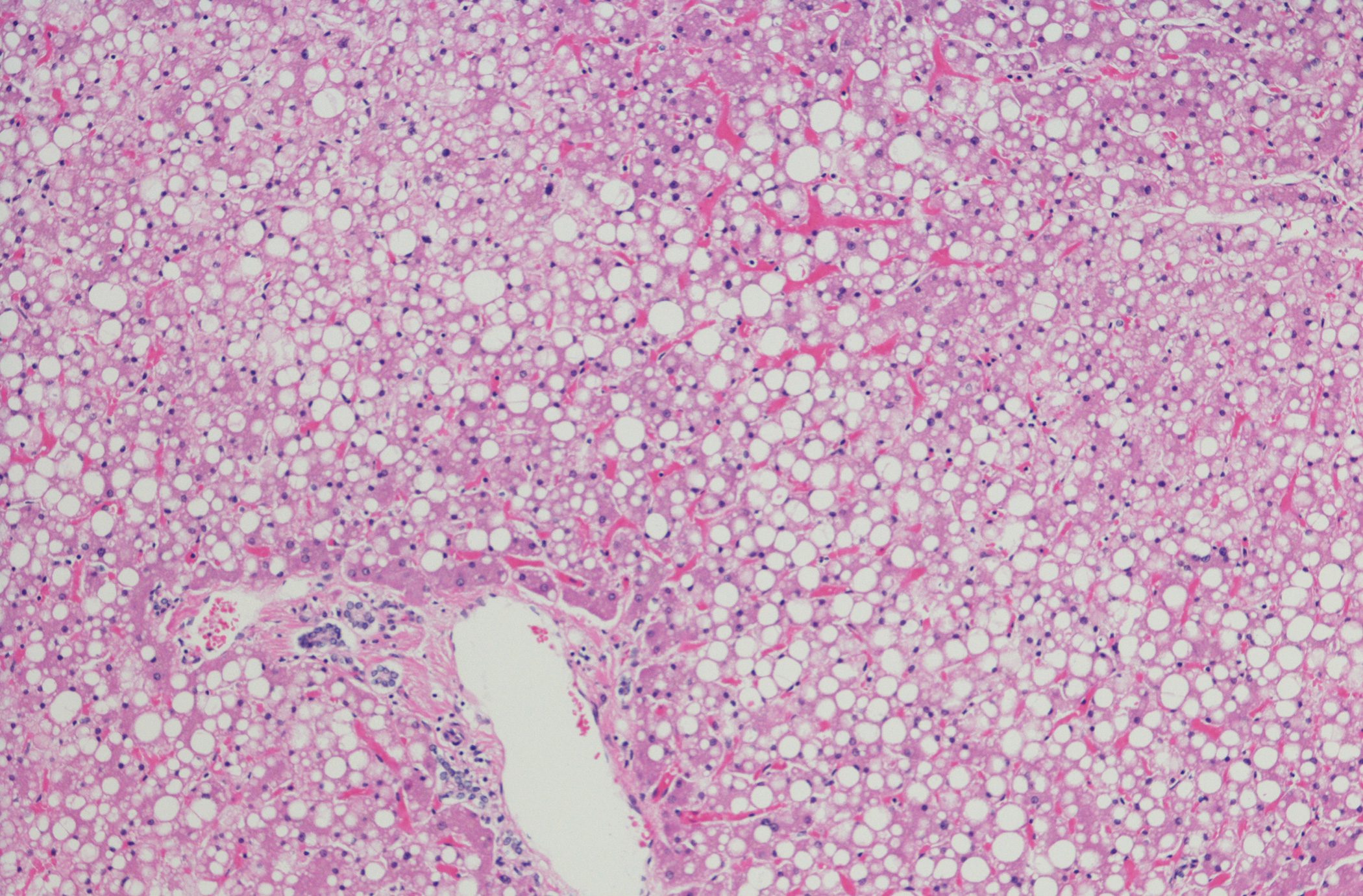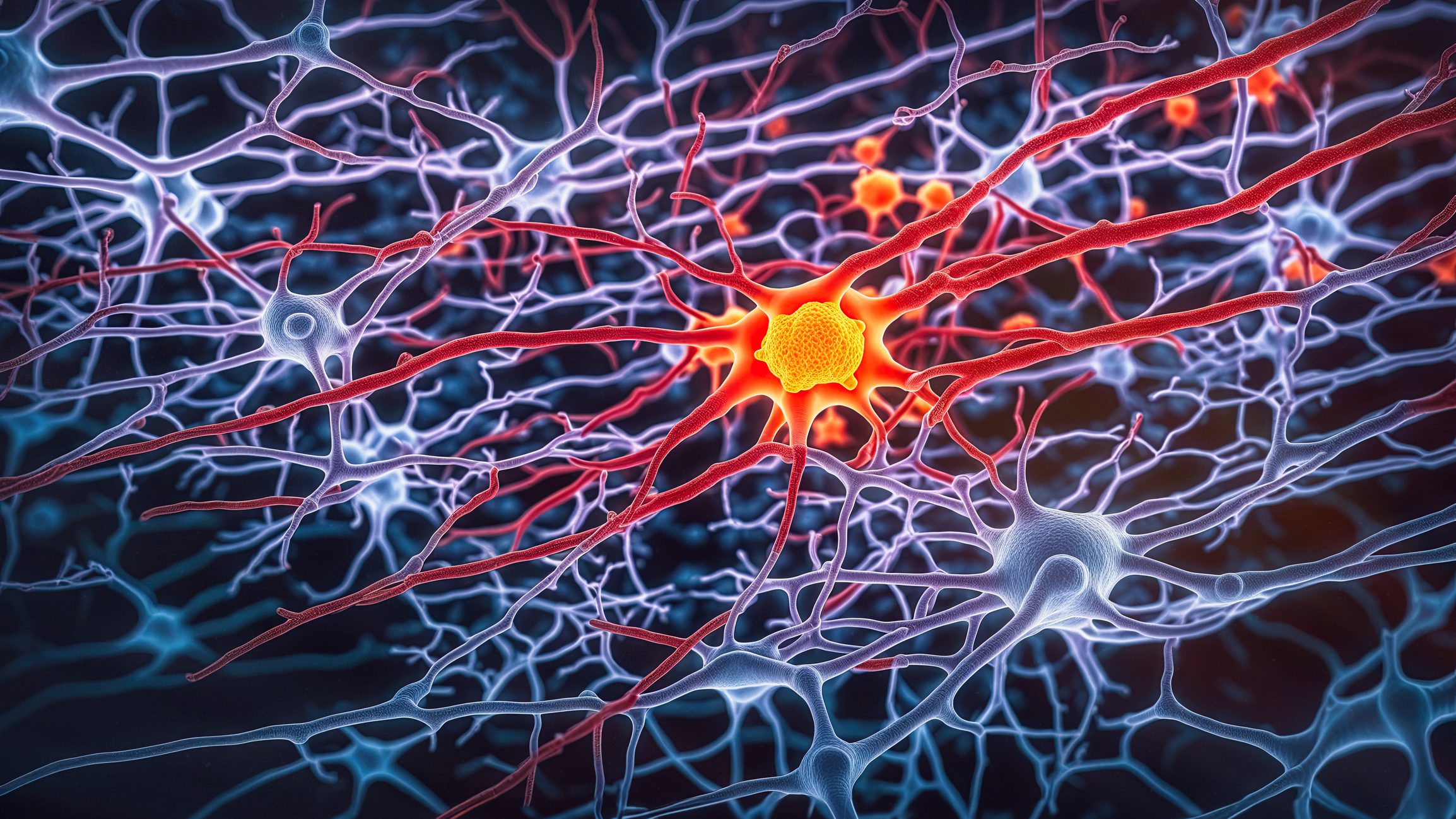This year, the congress committee focused on “Technology-supported treatment strategies – current practice and future prospects”. In doing so, they paved the way for new ways of biomarker-based diagnosis of Parkinson’s disease, MRI-guided focused ultrasound tractotomy for movement disorders and potential cell and gene therapies for Parkinson’s disease. However, other aspects relating to effective therapeutic measures were also discussed.
Corticobasal syndrome (CBS) in 4-repeat (4R) tauopathy is associated with rapidly progressive decline in cognitive and motor functions. The use of biomarkers has been evaluated in recent years for the diagnostic classification of CBS. However, the prognostic value of these biomarkers has not yet been investigated. Therefore, in a longitudinal cognitive and motor study of CBS patients with probable 4R tauopathy, the association of baseline biomarkers from imaging and plasma with the clinical course was examined in more detail [1]. The summary z-scores of the PET signal were measured for the whole brain as well as for cortical and subcortical brain areas, the volume of the subcortical and cortical gray matter in the MRI and plasma on the Simoa® Quanterix platform. An association of a higher tau PET signal with faster clinical progression was detected. A slower disease progression was observed with a higher microglia PET signal, a faster clinical deterioration with higher plasma NfL values. In summary,[18F]PI-2620 Tau-PET,[18F]GE-180 TSPO-PET and plasma NfL show prognostic potential for the assessment of clinical progression in CBS with probable 4R tauopathy.
Prognostic factors in MS
According to the disease with a thousand faces, the clinical picture of multiple sclerosis (MS) is extremely variable. Tremor and ataxia in the upper extremities in particular lead to considerable disability and impairment in everyday life. These have been difficult to treat effectively to date. Possible risk and protective factors have therefore now been investigated [2]. 205 patients were included in a cross-sectional study and examined clinically and by questionnaire. As limb tremor and ataxia are closely associated with each other, affected patients were assigned to a “tremor-ataxia symptom complex” (TAS). A TAS was detected in 22% of the subjects. A significantly longer duration of illness was found for these patients. They also suffered more frequently from paresis and spasticity and scored significantly worse in the cognitive assessment (MOCA) than patients without TAS. In contrast, patients with a first manifestation of retrobulbar neuritis were significantly less likely to have TAS, so this can be considered a protective factor. In addition, smoking patients showed a 2.8% increased risk of TAS per pack year.
Detection of different types of progression
The course of Parkinson’s disease exhibits considerable heterogeneity, which makes treatment management difficult. An AI-based analysis of multiple longitudinal cohorts was therefore used to investigate Parkinson’s progression types [3]. After aligning the patients on a uniform disease scale using a latent time joint mixed-effects model , different types were identified using Variational Deep Embedding with Recurrence (VaDER). 1124 patients from three cohorts were included in the analysis. The identified progression types of a rapid-progressive and slow-progressive subtype were reflected in comparable progression patterns of motor and non-motor symptoms in all three cohorts. The study provided evidence of a rapid and a slow progression type of Parkinson’s disease. The body-first vs. brain-first model could represent a possible biological explanation of the identified types.
Neuromuscular synergies in balance control
Balance disorders are common in patients with advanced Parkinson’s disease and are of high medical relevance. Neuromuscular synergies are useful as a model to describe movement control. The question therefore arose as to whether specific changes in neuromuscular synergies can be observed in pathological postural control [4]. It was hypothesized that the recruitment, but not the structure of the synergies is disturbed, as there is a disturbance of the supraspinal control but not of the spinal movement modules. The studies showed that Parkinson’s patients show specific changes in the temporal recruitment of neuromuscular synergies compared to healthy controls, but no significant differences in synergy loadings. A disturbance of the initiation and maintenance of the leg swing during the postural reaction is detectable and for the swing execution the extent of the deviation of the synergy recruitment from the reference synergy is correlated with the symptom load.
Predicting neurodegeneration in the retina
Dopamine transporter (DaT) SPECT is the in vivo gold standard for the detection of nigrostriatal dopaminergic neurodegeneration. Study results suggest that structural abnormalities of the retina are already present in the early stages of Parkinson’s disease, which can be detected and quantified using optical coherence tomography (OCT). However, the findings to date are inconsistent and the question arises as to what connection could exist between retinal changes and nigrostriatal neurodegeneration. Whether structural retinal abnormalities could be a marker for dopaminergic neurogeneration was investigated with regard to the correlation between the availability of stiatal dopamine transporters in DaT-SPECT and structural retinal abnormalities in OCT [5]. To date, 17 subjects have been examined with regard to the differential diagnosis of Parkinson’s disease using DaT-SPECT and OCT. They were categorized into the DaT+ group (abnormally reduced striatal DaT availability, BRASS z-value
Complex treatment management for a better quality of life
The quality of life of Parkinson’s patients is severely impaired by motor and non-motor symptoms. Inpatient multiprofessional Parkinson’s complex therapy (PD-MCT) aims to improve both groups of symptoms. Positive effects of PD-MCT on quality of life, emotional well-being, motor fluctuations and physical discomfort have already been demonstrated. A bicenter study has now investigated the effects on motor and non-motor symptoms using standardized symptom questionnaires and expanded these to include multimodal therapeutic assessments in order to generate more robust evidence on the effectiveness of PD-MCT [6]. It has been shown that pathological activation profiles of muscular synergies and acceleration profiles during walking are detectable in Parkinson’s patients. PD-MCT can achieve significant improvements in motor and non-motor symptom burden and quality of life. A significant improvement in gait parameters relevant to everyday life such as walking speed, walking endurance and stride length can be achieved. Muscular activation and acceleration patterns typical of Parkinson’s disease during walking were not altered by PD-MCT.
Counteract freezing in good time
Freezing of Gait (FOG) is a serious symptom in the late course of Parkinson’s disease. It significantly impairs the mobility of those affected and increases the risk of falling. There are currently no effective treatment approaches. However, the combination of external triggers (cueing) with technological advances could help to improve gait function and reduce FOG episodes. However, this requires reliable detection of FOG-associated movement in real time. A machine learning (ML)-based global classifier for step-based detection of FOG-associated gait characteristics was developed and validated in real-time measurements [7]. 16 Parkinson’s patients with FOG symptoms were fitted with an inertial sensor for each foot and completed various gait tests. A total of 2621 gait cycles and the annotation regarding FOG of synchronized video recordings were evaluated by an expert. The results of the cross-validation and real-time testing confirm an adequate performance of the online classification of FOG characteristics as a trade-off between performance and real-time capability. The methodology developed could be used as part of a digital health framework for demand-oriented cueing and continuous monitoring.
Digitalization in self-management
The management of Parkinson’s disease includes pharmacological, surgical and non-pharmacological therapeutic approaches. These are often optimized by supplementary measures in order to positively influence the course of the disease. Digital interventions, including self-management offerings, have received significantly more attention in recent years. However, these are still rare and lack a scientific basis. For this reason, we investigated the experiences of those affected and their relatives with the existing services and their wishes with regard to content, format, design and other aspects [8]. So far, 53 patients from different stages of the disease have been interviewed. This revealed that there are specific needs with regard to self-management services. These primarily cover the areas of cognition, exercise and mental well-being. Digital tools should therefore take into account both motor and non-motor symptom areas.
Short-term intervention for anxiety
Progression anxiety (PA) is the reactive, consciously perceived fear of the progression of a chronic illness. It can also occur in patients with Parkinson’s disease or multiple sclerosis and can be classified as either functional or dysfunctional. While functional PA promotes a conscious confrontation with the disease and can have a positive influence on treatment adherence, dysfunctional PA is often the result of maladaptive attempts to cope with the disease. It has now been investigated whether a group-based cognitive-behavioral short-term intervention can lead to improved coping with PA [9]. This showed that the willingness to actively address concerns about the future was the most important prerequisite for participation. An inpatient neurological rehabilitation setting seemed to have a rather unfavorable effect on the willingness to participate. Specific disease characteristics receded into the background during the intervention. Overcoming anxiety together in the group was perceived as very relieving.
Congress: German Congress for Parkinson’s and Movement Disorders
Literature:
- Palleis C, et al:[18F]PI-2620 tau PET, TSPO PET and neurofilament light chain as prognostic markers in amyloid-β-negative corticobasal syndrome. Poster 02-002. German Congress for Parkinson’s and Movement Disorders 2024, Rostock, 25-27.04.2024.
- Möller J, et al: Clinical characteristics and prognostic factors of tremor and ataxia of the upper extremity in multiple sclerosis. Poster 07-003. German Congress for Parkinson’s and Movement Disorders 2024, Rostock, April 25-27, 2024.
- Hähnel T, et al: Parkinson’s progression types: Results of an AI-based analysis of multiple longitudinal cohorts. Poster 03-001 German Congress for Parkinson’s and Movement Disorders 2024, Rostock, April 25-27, 2024.
- Wolff A, et al: Pathological recruitment of neuromuscular synergies during balance control in Parkinson’s patients. Poster 03-004 German Congress for Parkinson’s Disease and Movement Disorders 2024, Rostock, April 25-27, 2024.
- Plöttner P, et al: Applicability and specificity of optical coherence tomography as an indicator of nigrostriatal dopaminergic neurodegeneration. Poster 01-002 German Congress for Parkinson’s Disease and Movement Disorders 2024, Rostock, April 25-27, 2024.
- Friedrich I, et al: Assessment of variable motor and non-motor variables in the context of inpatient multiprofessional Parkinson’s complex therapy. Poster 04-004 German Congress for Parkinson’s and Movement Disorders 2024, Rostock, April 25-27, 2024.
- Salchow-Hömmen C, et al: ML-based real-time detection of freezing of gait in Parkinson’s disease with a single inertial sensor. Poster 01-003 German Congress for Parkinson’s and Movement Disorders 2024, Rostock, April 25-27, 2024.
- Seven ÜS et al. What are the experiences and needs of patients with Parkinson’s disease regarding digital self-management interventions in the areas of cognition, well-being and movement? A qualitative needs analysis. Poster 03-010. German Congress for Parkinson’s and Movement Disorders 2024, Rostock, 25-27.04.2024.
- Nielsen J, et al: Cognitive-behavioral short-term intervention for managing progression anxiety in people with Parkinson’s disease and multiple sclerosis. Results of a mixed-methods feasibility analysis. Poster 04-010. German Congress for Parkinson’s and Movement Disorders 2024, Rostock, 25-27.04.2024.
InFo NEUROLOGY & PSYCHIATRY 2024; 22(3): 22-23 (published on 31.5.24, ahead of print)












